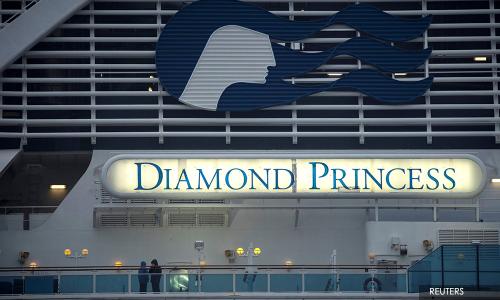LETTER | Cruises will lead recovery in tourism
LETTER | I am delighted to read that Port Klang Authority has given the green light for a cruise ship to dock at Boustead Cruise Centre on May 26 or 27 and will leave the port within one to two days after replenishing its stores and refuelling.
The ship is none other than the Diamond Princess. On Feb 20, more than half the known cases of Covid-19 in the world outside China were on this vessel. It was quarantined off the coast of Japan for almost a month. Ultimately, 712 people aboard were infected and 13 died.
In March, the ship completed disinfection work under the Japanese Health Ministry’s guidelines and was then moved 5km to dock at a Mitsubishi Heavy Industries Ltd plant in Yokohama to undergo interior refurbishment, with mattresses, bedding, linens and room ornaments replaced.
The voyage from Yokohama to Port Klang was reported globally as it marked a new chapter for cruise ships. In March, Malaysia joined other countries in imposing a blanket ban on cruise ships and had barred the Costa Fortuna carrying about 2,000 people from entering Penang port.
Last year, 150 cruise liners called on Port Klang with 360,000 cruise passengers compared to 300,000 in 2018. Apart from tourism revenue, there are economic spin-offs when cruise ships dock, such as supplying them with fuel, water and food needed by vessels and passengers.
And more significantly, the chronicle of Diamond Princess is a milestone of the Covid-19 pandemic; from the time the world was caught unprepared at the beginning of the year to the time of recovery, which can now be found in fully disinfected and sanitised cruise ships.
Many cruise ships were turned from floating palaces into prisons when they were not allowed to dock, or passengers and crew not allowed to disembark. But after thorough disinfection, they are now the safest place to be if everyone on board is free of communicable disease.
This could be attained if all passengers and crew are pre-quarantined overnight at hotels modified to carry out exhaustive testing. Only those confirmed to be without any communicable disease are to be transferred directly to the ship in disinfected buses.
This is a small price to pay for cruise passengers compared to air travellers, who will be exposed to other people that can come from anywhere and converge in crowded environments such as airports, hotels and restaurants, or inside the confines of an aircraft, train or bus.
This will take the fun out of leisure travel as lockdowns may be imposed suddenly leaving passengers stranded indefinitely in a foreign country. On the other hand, once cruise passengers are on board a ship, they can continue to relax and enjoy worry-free until the end of their voyage.
Large cruise ships in future will have a theme park with a rollercoaster. For example, the Global Dream, a 208,000 gross tonnage vessel with 19 decks now under construction and scheduled to launch next year, will have a rollercoaster that can reach 60kph on a 303m-long track.
While many other tourism sectors are still struggling to get out of the woods, cruise ships are ready to sail after overhauling their modus operandi. Last year, cruise liners carried 30 million people globally and growth will be exponential.
Cruises inspire confidence and offer comfort and convenience in a safe, secure and sanitised environment. Holidaymakers and tourism industry players must not miss the boat.
The views expressed here are those of the author/contributor and do not necessarily represent the views of Malaysiakini.
RM12.50 / month
- Unlimited access to award-winning journalism
- Comment and share your opinions on all our articles
- Gift interesting stories to your friends
- Tax deductable
